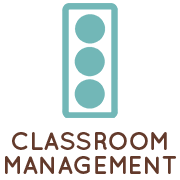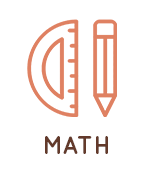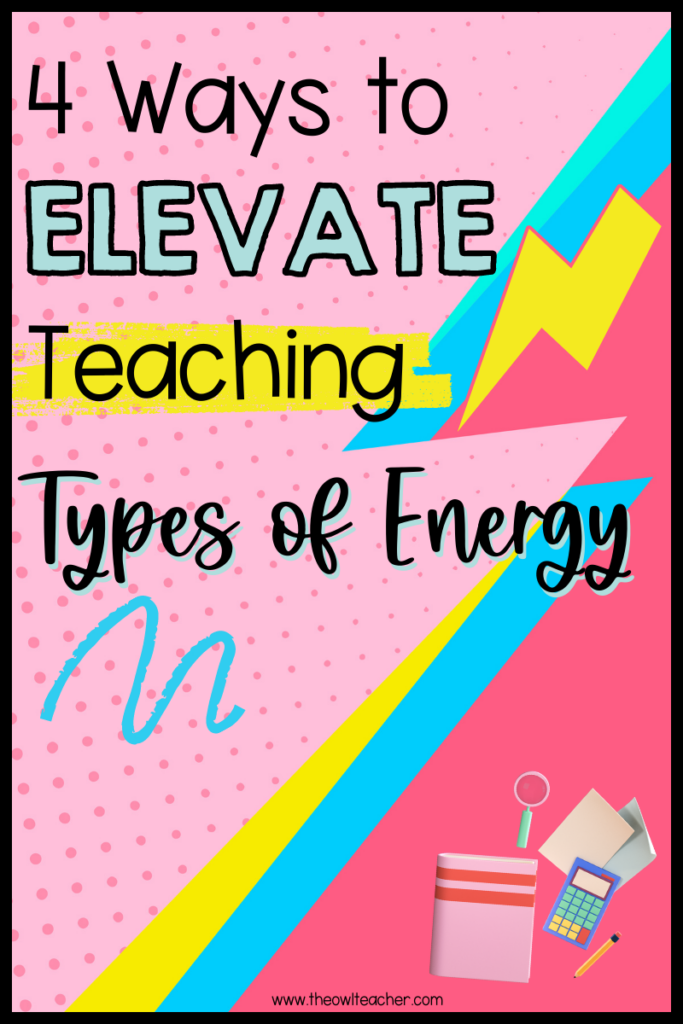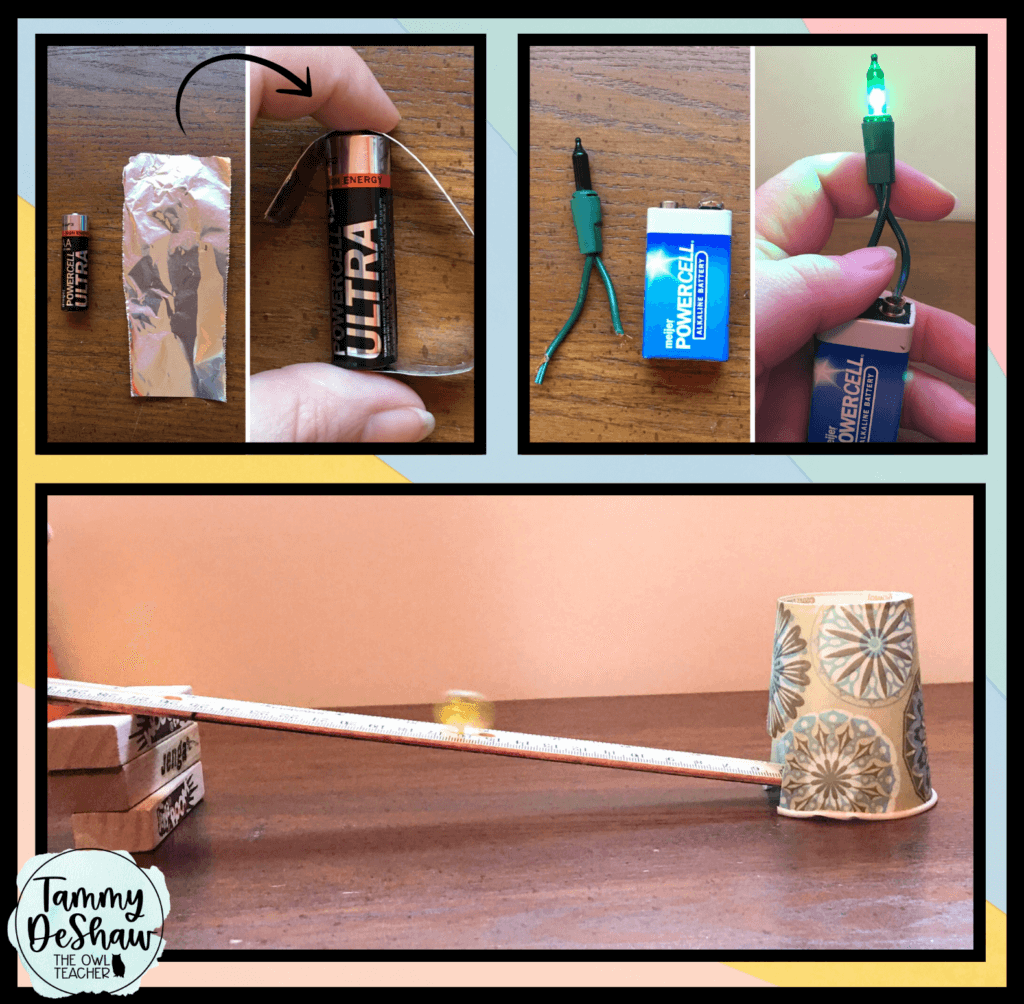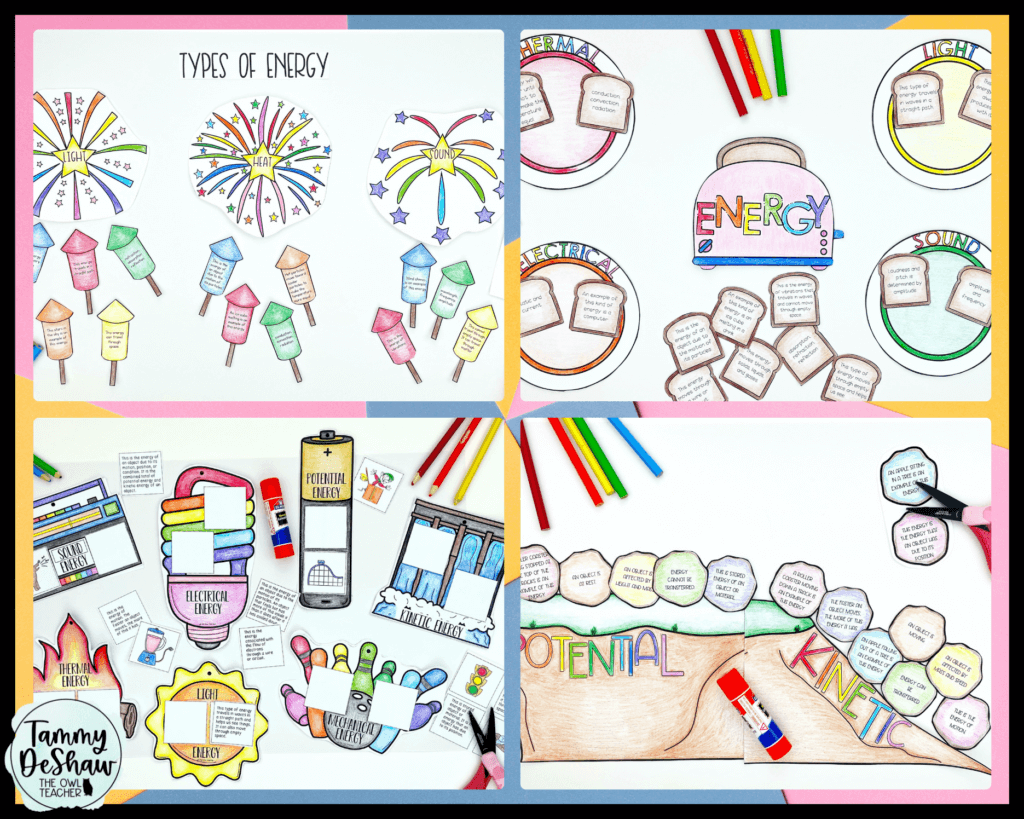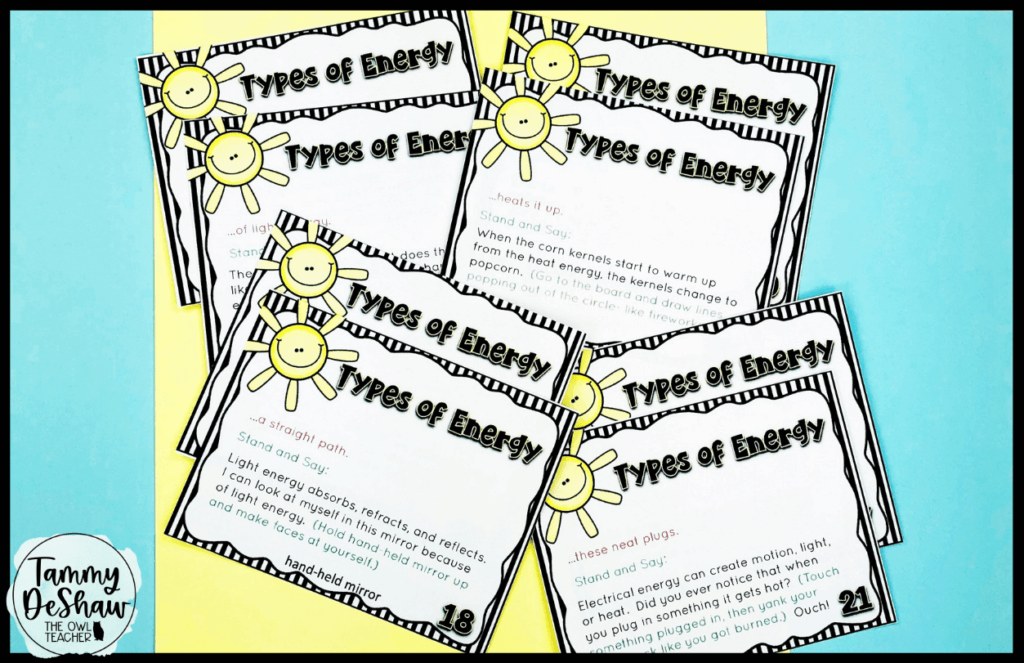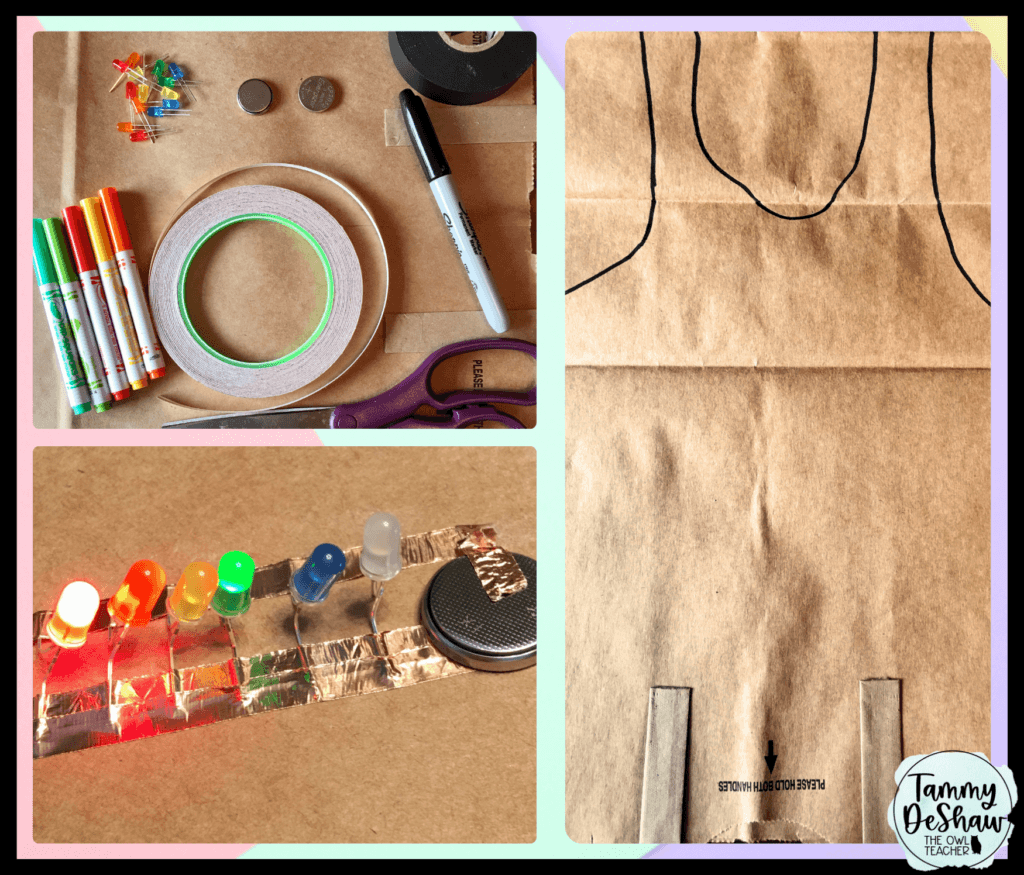Warning: there may be quite a few puns in this blog post–don’t let them shock you. 😉
Now, it’s mid-May and the school year is drawing to a close. By now, we’re starting to get tired. It’s time to restore a little energy to our classrooms! What better way to do that than by teaching about the various types of energy?
From mechanical to sound to thermal to potential and beyond, teaching about all of the types of energy can definitely seem overwhelming. Where do you begin? Not only that, but how are you supposed to fit in all that curriculum? The biggest struggle isn’t getting students to understand the concepts, though that struggle may appear from time to time. Rather, the greatest obstacle is having the time to properly explore all of the concepts.
I’ve written before about ways to integrate science into other areas of your classroom to save time, but some concepts, such as energy, require more attention. In that case, how can we be sure to thoroughly explore the types of energy in our classroom in a time-efficient manner while still ensuring we explain the curriculum to its full potential?
You saw that pun, right?
Regardless, I have four methods for you to use when exploring the types of energy. Let’s make like kinetic energy and get moving!
Types of Energy Centers Have Potential!
It’s no secret: I love centers, especially for math and science! Of course, there’s a reason they’re on this list besides just my affection–they really work! Centers are a versatile tool that can be used to cover a variety of topics no matter how much time you do or don’t have for your science block.
Besides helping us move through a large variety of content in a short amount of time, centers have a myriad of benefits. When students participate in a traditional centers setting, they’re doing what they love best–getting up and moving around! Is there any kiddo out there who doesn’t love moving around the room? They’re just full of potential energy!
But on a more serious note, we know that students are more receptive to information and retain new knowledge better when they are engaged. When your students are moving around, interacting with a variety of different activities, and communicating (academically, of course) with their peers, they’re going to learn better. That’s just science!
In addition, centers are adaptable. For instance, my types of energy science centers can be used for review after a lesson, or they can be used for an in-depth look at the types of energy. In addition, these pre-made centers are meant to save time, so they’re easy and simple to set up! Now, I won’t spoil all of the centers for you… But here are a few pictures of the activities in action:
Looks exciting, right? But wait, there’s more! Centers like these are meant to be student-led, meaning you’re freed up to spend time with any students who may be struggling. That means centers save time, save effort, are adaptable to your class’s needs, engage students, and allow you time for intervention. Heck, yeah! Talk about potential energy!
Types of Energy Craftivities are Electric!
Okay, so Tammy loves puns, centers, and saving time. What else?
Craftivities, of course! I love working with my hands, and I especially love coloring–two traits I often find that I share with my classroom kiddos! Beyond my love for craftivities, however, there are some real benefits. Just like centers, craftivities are hands-on and engaging; past that, though, is where the activities differ.
In a broader sense, craftivities are better-suited for review and as a fun way for us as teachers to assess students’ understanding of the concept. They’re more supplementary than centers are. However, that doesn’t mean they’re less worthwhile! In fact, craftivities have a few benefits that centers don’t. For example, students can keep the finished project for review whenever they need a refresher of the subject. In addition, craftivities tend to be lower prep than centers are–just print and go!
Of course, craftivities also make a super cute display for bulletin boards or classroom decor… You know, if you’re into that kind of thing! 😉
If you’re super into centers, though, many craftivities can be converted into centers. For example, I have four different types of energy craftivities: one with heat, light, and sound energy; one with heat, light, sound, and electrical energy; one with all the forms of energy; and one on potential and kinetic energy, pictured respectively below:
Each of these craftivities can be split into centers individually, or you could combine them with the others in the set for four centers in one rotation. Of course, you’re not limited to just these four–there are plenty of energy-based craftivities out there if you’re looking to electrify your classroom!
Sound Off with Types of Energy Causation Cards!
Causation cards are another personal favorite of mine–yes, I have lots of favorites, but it’s fun to have variety!
To be honest, I feel like not enough teachers take advantage of causation cards. They’re an excellent way to integrate oral fluency, prosody, and reading accuracy into your science block, and they’re straightforward enough that all students can easily participate and enjoy.
If you’re new to the concept of causation cards, you’re in for a treat! Here’s a rundown: you’re provided with a set of numbered cards that you distribute randomly to your class. Each card lists an action that the student must perform as well as a statement that they say out loud. The action is generally something simple (such as jumping in the air), and the statement is usually a term or related concept. Whoever has the first card (which you may keep for yourself if you’d like) reads their card, and the rest of the class listens carefully to know when it is their turn.
To make things even easier, my causation cards are color coded. The end of a statement that the previous student said is in red, their action to be performed is in green, and the statement that they must say out loud is in black. All students have to do is listen for the statement in red to be said by someone else in the room, then they stand up and read their own card, then perform their action!
I love to use causation cards as an introduction or as a review for a unit. It keeps students engaged, since they must be keeping an ear out for their part and have their action ready. Their flexibility and simplicity make causation cards a winner in my book!
Before you ask: yes, I do have causation cards for types of energy! You can find them here, and preview them in the image above. Just print, cut, and go–you’re ready to sound off!
Light Up Your Class with Types of Energy STEM Challenges!
Okay, so the other puns in the headings were just that: puns. However, this one is literal! At least, it can be.
It’s no secret that STEM challenges are flourishing in today’s classroom, and for good reason–they’re an invaluable resource for any teacher who participates in project-based learning (which you should totally be using, by the way… Just make sure you’re doing it right!). STEM challenges require communication and teamwork between students and their peers–both priceless skills for the real world–as well as expanding on critical thinking skills and creativity. Between all those skills, plus the fact that you’re saving time by integrating science, technology, engineering, and mathematics into one project, why not use STEM challenges?
There are a plethora of STEM challenges out there for types of energy, but I’ll save you some time by tossing this one your way: my electric vests STEM challenge! I’m sure you know all about STEM projects and how they work (but if you need a refresher, I got you), so I won’t bore you with the details, especially since they can all be found in that blog link. Let me tell you, though: this one is a lot of fun! I look forward to it in the classroom every single year, and even my own children have asked to do it a few times. If that’s not a winning review, then I don’t know what is! You can find the electric vest stem challenge here.
This vest is bound to light up your students’ faces with all its light and electrical energy, but there are plenty of other STEM challenges if you’re looking for something different. As the kids say these days, it’s just a Google search away!
… Or you can just check out TpT. 😉
No matter how energetic your class is, you’re bound to find something here to spark their interest and keep their attention. Teaching about the various types of energy can seem overwhelming at first, but with these methods, you won’t be in the dark for long–you’re bound to enlighten your students!
Now that we’ve made it to the end of the post… Did you happen to notice how many puns I managed to sneak in? I’ll give you a hint: there were so many that I lost count. If you lost count, too, that’s fine–so long as you remember these four easy ways to optimize teaching types of energy in your classroom!
For more science activities, you can check out my TpT store or my other blog posts. Now, I’m sure you’re just buzzing with ideas… Go out and capture that energy!


